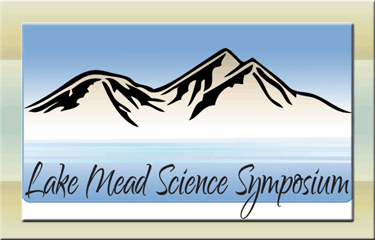Location
UNLV Student Union
Start Date
13-1-2009 8:00 AM
End Date
14-1-2009 6:00 PM
Description
Assessing the changes in contaminant inputs (both organic and inorganic) over time is important in determining sources and sinks of these inputs. Variations in contaminant input were assessed in four sediment cores taken in 1998 from three different parts of Lake Mead (two from Las Vegas Bay and one from Overton Arm and Virgin Basin). Sediments were analyzed for major and trace elements, radionuclides, and organic compounds. Anthropogenic contaminant concentrations are greatest in Las Vegas Bay reflecting inputs from the Las Vegas urban area, although concentrations are low compared to sediment quality guidelines and to other USA lakes. One exception to this pattern was higher mercury concentrations in the Virgin Basin core. The Virgin Basin core is in the main body of the reservoir and is influenced by the hydrology of the Colorado River, which changed after completion of Glen Canyon Dam. Major- and trace-elements in the core show pronounced shifts in the early 1960s and, in many cases, gradually return to concentrations more typical of pre-1960s by the 1980s and 1990s, after the filling of Lake Powell upstream. The Overton Arm is the sub-basin least effected by anthropogenic contaminant inputs. Cores from Las Vegas Bay taken in 2007 were analyzed for emerging contaminants and although data are still preliminary, detections of musk fragrances have been found only in the upper 10 – 15 cm of the core, indicating that these compounds either degrade with time or have only been accumulating for the past 10 – 20 years.
Keywords
North America – Colorado River; United States – Lake Mead; Water – Pollution; Water quality; Water-supply – Management
Disciplines
Environmental Monitoring | Fresh Water Studies | Natural Resources Management and Policy | Water Resource Management
Language
English
Included in
Environmental Monitoring Commons, Fresh Water Studies Commons, Natural Resources Management and Policy Commons, Water Resource Management Commons
History of contaminant inputs into Lake Mead derived from sediment cores
UNLV Student Union
Assessing the changes in contaminant inputs (both organic and inorganic) over time is important in determining sources and sinks of these inputs. Variations in contaminant input were assessed in four sediment cores taken in 1998 from three different parts of Lake Mead (two from Las Vegas Bay and one from Overton Arm and Virgin Basin). Sediments were analyzed for major and trace elements, radionuclides, and organic compounds. Anthropogenic contaminant concentrations are greatest in Las Vegas Bay reflecting inputs from the Las Vegas urban area, although concentrations are low compared to sediment quality guidelines and to other USA lakes. One exception to this pattern was higher mercury concentrations in the Virgin Basin core. The Virgin Basin core is in the main body of the reservoir and is influenced by the hydrology of the Colorado River, which changed after completion of Glen Canyon Dam. Major- and trace-elements in the core show pronounced shifts in the early 1960s and, in many cases, gradually return to concentrations more typical of pre-1960s by the 1980s and 1990s, after the filling of Lake Powell upstream. The Overton Arm is the sub-basin least effected by anthropogenic contaminant inputs. Cores from Las Vegas Bay taken in 2007 were analyzed for emerging contaminants and although data are still preliminary, detections of musk fragrances have been found only in the upper 10 – 15 cm of the core, indicating that these compounds either degrade with time or have only been accumulating for the past 10 – 20 years.

Comments
File: Poster